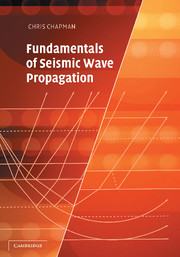Book contents
- Frontmatter
- Contents
- Preface
- Preliminaries
- 1 Introduction
- 2 Basic wave propagation
- 3 Transforms
- 4 Review of continuum mechanics and elastic waves
- 5 Asymptotic ray theory
- 6 Rays at an interface
- 7 Differential systems for stratified media
- 8 Inverse transforms for stratified media
- 9 Canonical signals
- 10 Generalizations of ray theory
- Appendices
- Bibliography
- Author index
- Subject index
9 - Canonical signals
Published online by Cambridge University Press: 19 January 2010
- Frontmatter
- Contents
- Preface
- Preliminaries
- 1 Introduction
- 2 Basic wave propagation
- 3 Transforms
- 4 Review of continuum mechanics and elastic waves
- 5 Asymptotic ray theory
- 6 Rays at an interface
- 7 Differential systems for stratified media
- 8 Inverse transforms for stratified media
- 9 Canonical signals
- 10 Generalizations of ray theory
- Appendices
- Bibliography
- Author index
- Subject index
Summary
Many seismic signals - direct rays, partial and total reflections, transmissions, head waves, interface waves, tunnelling waves, caustics and Fresnel shadows - can be described by the inverse transform methods developed in the last chapter. First-motion approximations to the Cagniard or WKBJ methods, or asymptotic spectral methods can be used to investigate these signals. In addition the spectral method can be used for deep shadow signals.
In this chapter, we investigate approximate solutions for many canonical signals, e.g. direct rays, partial and total reflections, transmissions, head waves, interface waves, tunnelling waves, caustics, Fresnel and deep shadows. Unfortunately, often these canonical signals do not occur in isolation and for realistic, complicated models it is necessary to use numerical methods as described in the last chapter (Section 8.5.2) for the complete response. With modern computers, these numerical computations are entirely practical and are preferred for forward modelling. Nevertheless, it is worth investigating approximations for canonical signals as it aids an understanding of wave propagation, and for interpreting the results of modelling and real data. While it is rare that the approximate results described here are used for complete, forward modelling, they are frequently employed to check more complete methods, and as an aid to interpretation or in an inverse problem, when complete modelling is too expensive.
The nomenclature for signals, particularly non-geometrical, is not standardized. In this chapter, we denote rays in multi-layered media with a sequence of letters with a subscript for each ray segment, e.g. P1S2 is a ray with a P ray segment in layer 1 and an S segment in layer 2 (therefore the source must be in layer 1, receiver in layer 2 and it must have a converted transmission at the interface, z = z2).
- Type
- Chapter
- Information
- Fundamentals of Seismic Wave Propagation , pp. 378 - 458Publisher: Cambridge University PressPrint publication year: 2004



